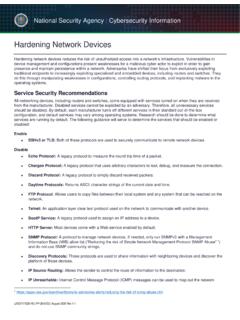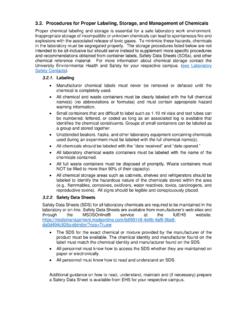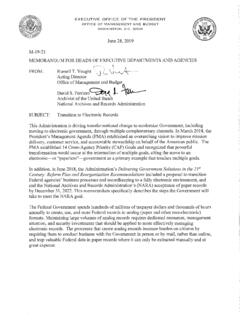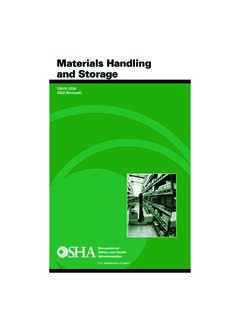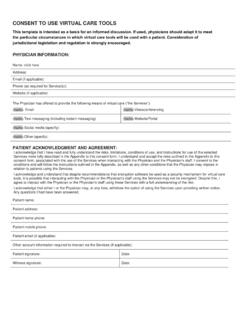Transcription of Insulin infusion pump management Inpatient guidelines
1 Insulin infusion pump management Inpatient guidelines Statewide Diabetes Clinical Network July 2016. Insulin infusion pump management : Inpatient guidelines Published by the State of Queensland (Queensland Health), July 2016. This document is licensed under a Creative Commons Attribution Australia licence. To view a copy of this licence, visit State of Queensland (Queensland Health) 2016. You are free to copy, communicate and adapt the work, as long as you attribute the State of Queensland (Queensland Health). For more information contact: Healthcare Improvement Unit, Department of Health, GPO Box 48, Brisbane QLD 4001, email phone 3328 9302. An electronic version of this document is available at Disclaimer: The content presented in this publication is distributed by the Queensland Government as an information source only. The State of Queensland makes no statements, representations or warranties about the accuracy, completeness or reliability of any information contained in this publication.
2 The State of Queensland disclaims all responsibility and all liability (including without limitation for liability in negligence) for all expenses, losses, damages and costs you might incur as a result of the information being inaccurate or incomplete in any way, and for any reason reliance was placed on such information. Page 2. Contents 4. Background .. 4. guidelines .. 5. Competency ..5. Contraindications ..6. Documentation ..7. Consultations ..7. Insulin adjustment ..7. Blood glucose monitoring ..8. Continuous glucose monitoring systems ..8. Device management ..9. Operations and procedures ..9. Other Paediatrics ..11. Appendices .. 12. 14. Page 3. Purpose These guidelines have been developed to provide advice and guidance to Queensland Health staff so that individuals whose diabetes is being treated in the outpatient setting with a continuous subcutaneous Insulin infusion (CSII) delivered with an Insulin pump, can continue to be managed safely with their Insulin pump during their hospitalisation.
3 Background An Insulin pump is a complex electronically -controlled device for the continuous subcutaneous infusion of Insulin to patients with type 1 diabetes mellitus. Its advantage over multiple daily Insulin injections is that patients can deliver more physiological amounts of Insulin between meals and at meal times. There are many Insulin pumps now available and all Insulin pumps have different management programs. It is highly unlikely that non-specialised medical or nursing staff will know the exact details of how to program and operate each device and even highly specialised staff within diabetes and endocrine units may not have this knowledge unless they work in clinics where patients using these devices are seen regularly. However, the basic principles of Insulin administration using CSII with an Insulin pump is not dissimilar to the principles involved in a basal bolus multiple injection Insulin regimen.
4 This involves maintaining constant background Insulin administration (basal Insulin therapy). with boluses of Insulin administered when food is consumed (bolus therapy) and corrections being given when blood glucose is out of target. It is recommended that Insulin pumps deliver ultra-short acting analogue Insulin (Novorapid, Humalog). There is prospective data confirming that analogue therapy achieves better glycaemic control. There is no long acting Insulin administered. Cessation of Insulin pump therapy will result in the patient becoming relatively Insulin deficient within one hour and absolutely Insulin deficient within four hours. There is a major risk of severe hyperglycaemia and ketoacidosis occurring within hours following discontinuation of therapy. Insulin replacement therapy must be commenced immediately (eg IV Insulin infusion or intermittent subcutaneous injections) on discontinuation of Insulin pump therapy.
5 Hospital staff should assume, unless otherwise advised, that the only person who can manage the pump during their hospitalisation is the patient, or in the case of children their parent/guardian. Any changes in Insulin administration will need to be made by the patient/parent/guardian who must be competent in managing the pump and physically and mentally able to accept and institute these recommendations . These guidelines provide a framework for hospital staff to assess competency, document a patient's suitability to continue on CSII therapy and provide recommendations when pump therapy should be discontinued. Page 4. guidelines Competency Any patient who is admitted to hospital using an Insulin pump must be assessed for their competency to use their device. If they can demonstrate their physical and mental competency to manage the device, the patient should be allowed to continue on their Insulin pump.
6 The Insulin pump management checklist (Attachment 1) should be used as a tool to guide this assessment of the patient's competency to manage the Insulin pump during the admission. On admission to hospital, either to a ward or emergency department, the patient must demonstrate to the satisfaction of the assessing health professional that they have the ability to use the management program of the device and understand how to modify the program. It is acknowledged that the assessing health professional may have no competency in the practical management of the Insulin pump. The role of the health professional is to assess the competency of the patient to use the Insulin infusion pump. This will involve asking the patient to demonstrate that they: 1. can open the management menu of the device 2. are able to adjust the basal rate 3. are able to adjust the bolus dose 4. can re-site their pump cannula.
7 This could involve discussing how it is done, rather than actually undertaking the activity at this initial assessment 5. can demonstrate technical competency regarding cannula sites / how they would manage infusion line obstructions / site leaks 6. can undertake appropriate problem solving actions if BGLs are high or low 7. have adequate supplies of infusion sets, spare batteries and the Insulin used in the Insulin pump available for the anticipated duration of the admission 8. have been performing regular blood glucose monitoring tests (for example, four tests per day). The diabetes educator or diabetes resource person for the hospital should be notified upon admission of a patient with an Insulin pump (Section 4). An urgent consultation should be obtained if there is a concern about competency of the patient to continue on pump therapy. The resource person may be able to advise or rectify any issues or concerns, allowing the patient to continue on their Insulin pump.
8 If the patient (or parent/guardian) cannot competently demonstrate or describe the actions above, the Insulin pump should be discontinued. The patient should be placed on an IV Insulin infusion or subcutaneous Insulin regime (eg, basal/bolus Insulin regimen in adults) during their hospitalisation. Page 5. Contraindications The use of the CSII is contraindicated in situations where the patient's safety may be compromised by the physical illness or mental state of the patient. Absolute contraindications for CSII using an Insulin pump are:- 1. patients with an impaired level of consciousness Note: Insulin pump therapy can be continued during anaesthesia (with decreased level of consciousness) as long as the anaesthetist is aware of and willing to manage the pump during anaesthesia. 2. patients with critical illness requiring intensive care 3. patients with major psychiatric disturbance 4. diabetic ketoacidosis 5.
9 Patients refusing or unwilling to participate in self-care 6. lack of infusion sets, spare batteries and other equipment required to maintain patient on CSII therapy 7. any other medical circumstance deemed unsuitable by the supervising medical officer. If the patient presents with any of above items the Insulin pump must be discontinued and the device managed according to the hospital's policy for storage of patient valuables. When storing the pump be sure to remove the battery from the device to prevent ongoing pump alarms. The patient should be placed on an IV Insulin infusion or subcutaneous Insulin regime (eg basal/bolus Insulin regimen in adults) during their hospitalisation. In the case of Item 7, an urgent discussion of the patient's condition and management with the diabetes specialist, diabetes educator or diabetes resource person for that hospital should be considered. Page 6. Documentation Before a patient continues on CSII as an Inpatient , the following criteria must be documented.
10 1. It must be clearly written in the medical record and on the blood glucose monitoring form that the patient is on an Insulin pump. 2. The brand name and model of the pump must be written in the medical record. 3. The type of Insulin used in the Insulin pump must be identified and recorded in the blood glucose monitoring form. 4. The current basal and bolus Insulin doses must be documented in the medical record. Ideally the pump data would be downloaded and the print out stored in the medical chart for reference. 5. That competency has been assessed and deemed satisfactory, as per Section 1. 6. The patient agrees to notify the medical staff of any changes they make to their Insulin pump. Consultations The following health professionals should be consulted: endocrinologist or physician with interest in diabetes diabetes educator or diabetes resource person trained in Insulin pump management dietitian.










